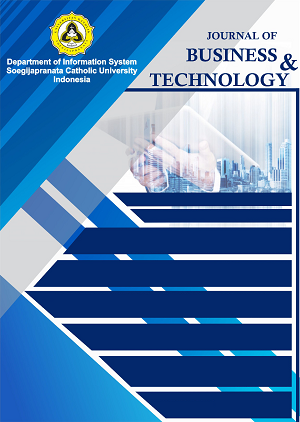Game Save The Sea! as an Education Media to Prevent Water Pollution
Abstract
Human’s ignorance is the most threatening factor to natural water sources on the system. The habit of littering and poor waste management often occurs in developing countries, especially Indonesia. Through an educational game this message could be delivered easier. This paper is intended to find ways for people to be more concerned with water pollution. The questionnaire and interview methods are used to search for pre-test and post-test data. From the pre-test data, “Save The Sea” mobile game is created which can help educate the public about the dangers of water pollution. After 5 times playing of once each day, game testing was conducted to 39 people and fill the questionnaire. Post test data result shows that the game succeeded in creating conditions where people were more concerned about water pollution.
Keywords
Full Text:
PDFReferences
D. Dudgeon et al., “Freshwater biodiversity: Importance, threats, status and conservation challenges,” Biological Reviews of the Cambridge Philosophical Society. 2006.
D. J. McCauley, M. L. Pinsky, S. R. Palumbi, J. A. Estes, F. H. Joyce, and R. R. Warner, “Marine defaunation: Animal loss in the global ocean,” Science. 2015.
C. L. J. Frid and B. A. Caswell, Marine pollution. 2017.
Agus Riyadi, “Pengelolaan Sumber Daya Air Yang Terpadu dan Berkelanjutan | Jurnal Lingkungan Hidup,” Bumi Lestari Langit Bebas Polusi, 2012. .
M. A. Browne et al., “Accumulation of microplastic on shorelines woldwide: Sources and sinks,” Environ. Sci. Technol., 2011.
J. A. Ivar Do Sul and M. F. Costa, “The present and future of microplastic pollution in the marine environment,” Environmental Pollution. 2014.
B. M. Berger, R. Caillois, and M. Barash, “Man, Play, and Games.,” Am. Sociol. Rev., 2006.
S. Egenfeldt-Nielsen, J. H. Smith, and S. P. Tosca, “Understanding video games: The essential introduction,” Routledge, 2008.
J. Novak, Game development essentials: an introduction, 3rd ed. Cengage Learning, 2011.
C. Crawford, Chris Crawford on game design. New Riders, 2003.
A. J. A. M. van Deursen, C. L. Bolle, S. M. Hegner, and P. A. M. Kommers, “Modeling habitual and addictive smartphone behavior,” Comput. Human Behav., 2015.
Statista, “Smartphone User Penetration in Indonesia,” 2019. [Online]. Available: https://www.statista.com/statistics/257046/smartphone-user-penetration-in-indonesia/.
D. W. P. A. P. N. E. W. Puspitarini, “GAME EDUKASI BERBASIS ANDROID SEBAGAI MEDIA PEMBELAJARAN UNTUK ANAK USIA DINI,” J. Teknol. Inf. dan Komunikasi, 2014.
P. D. Sugiyono, metode penelitian kuantitatif, kualitatif,dan R&D. 2016.
Supsiolani, “Jurnal Studi Perpustakaan dan Informasi, Vol.2, No.1, Juli 2006,” vol. 2, no. 1, pp. 32–36, 2006.
DOI: https://doi.org/10.24167/jbt.v1i2.3537
Refbacks
- There are currently no refbacks.
e-ISSN: 2776-0332 | View My Stats



